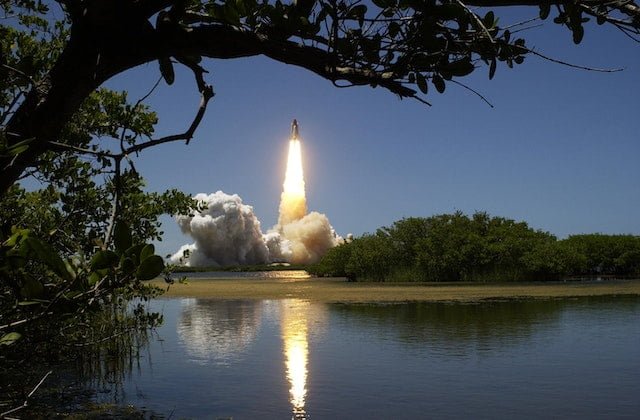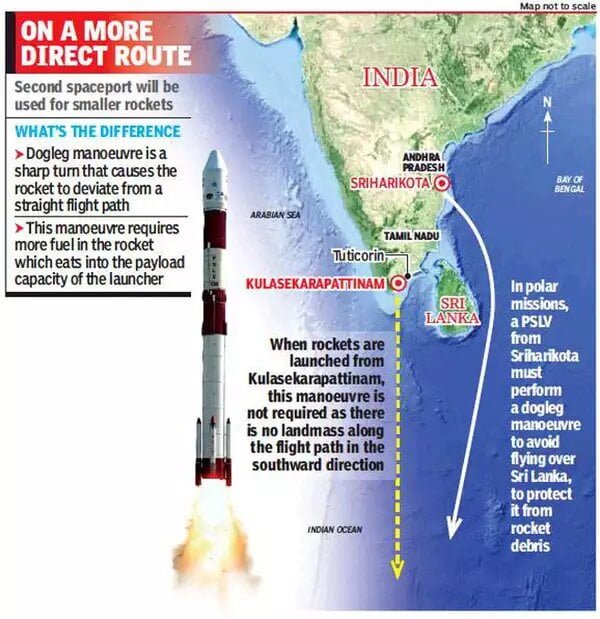ISRO(Indian Space Research Organisation) is developing India’s first private satellite launch station in Kulasekhpatnam in Tamil Nadu. It is ISRO’s 2nd launching station dedicated to the private sector. It is under construction and located 70 km from Kanyakumari. Its campus area is around 2376 acres. It is suitable for small satellite launches and it is operated by NSIL(New Space India Limited) where a private company can launch their satellite by using SSLV (small satellite launch vehicle) and also use their own rocket for satellite launching.

Why India Needed a 2nd Satellite Launch Station
There may be many reasons but we discuss three reasons
Globally Small satellite launch market is a multimillion-dollar market that is estimated at $3215.9 million in 2020 and will reach $13711.7 million by 2030 growing at a CAGR of 16.4%. This market is dominated by Elon Musk’s company Space-X so ISRO will capture this market with SSLV and become self-funded and a profitable organization. NSIL (New Space India Limited) commercial arm of ISRO will take responsibility for all the launching of SSLV.
Know more about- SSLV (Small Satellite Launch Vehicle): India’s new rocket for a new market
2nd reason is that ISRO (Indian Space Research Organisation) is a research and development organization and must be focused on the development of new technologies and space exploration. ISRO’s 2nd launching pad in Kulasekhpatnam will free ISRO from day-to-day satellite launches by diverting this task to NSIL.
The third reason is that ISRO has developed many indigenous technologies over many years of research and these technologies are unused now because ISRO is working on new projects. New policies of the government have decided that ISRO will transfer these technologies to Indian space startups so these start-ups compete with global companies, this required a new launch station to cater to these demands and strengthen the ecosystem.
For the promotion of private companies in the Space sector, the Indian government creates a new autonomous body IN-SPACe (Indian National Space Promotion and Authorisation Centre ) under the Department of Space. IN-SPACe will promote, authorize, and supervise various activities of private companies like building their rockets and satellites, and enable them to use the premises and infrastructure of ISRO.
Why Kulasekhpatnam is important for ISRO
The geographic location of Kulasekhpatnam where India’s 2nd launching station is being constructed is more suitable than launch pads in Sri Harikota for SSLV (small satellite launch vehicle) because when SSLV flies from Kulasekhpatnam it takes a straight route to the South Pole without performing maneuvers to avoid Sri Lanka’s Landmass.
The location of Sri Harikota is not suitable for launching SSLV because SSLV is a small rocket and its fuel capacity is limited, If it is launched from Sri Harikota it has to perform a maneuver to avoid overflying Sri Lanka. These maneuvers required extra fuel which compromised with rocket’s payload capacities.
When PSLV and GSLV rockets are launched from Satish Dhawan Space Centre in Sri Harikota, they follow a trajectory in the South-East direction after lift-off to avoid overflying Sri Lanka and protecting Sri Lanka from rocket debris, the rockets take a sharp maneuver to a straight line after crossing the landmass of Sri Lanka and proceed toward the South Pole, this Dogleg maneuver requires extra fuels. PSLV and GSLV are large and heavy rockets the effect of maneuvering is easily manageable without compromising the rocket’s payload capacities.

From a strategic point of view, India must have a 2nd Space Centre so that if one Space Center is not functional due to any reason then the 2nd Space Centre must fulfill the requirements.
The 2nd Space Centre in Kulasekhpatnam is expected to launch mini, micro, and nanosatellites (10 kg to 500 kg mass) to lower earth orbit.
Satish Dhawan Space Center in Sri Harikota is India’s first Space center it is spread over a 145 sq km (26000 acres) area. It has two launching pads for PSLV and GSLV flights.
Read other articles also-
Why is Kulasekhpatnam chosen for the satellite launch?
The geographical location of Kulasekhpatnam is suitable for satellite launches because there is no landmass between Kulasekhpatnam and the South Pole so no need for maneuvering hence fuel consumption will be low.

